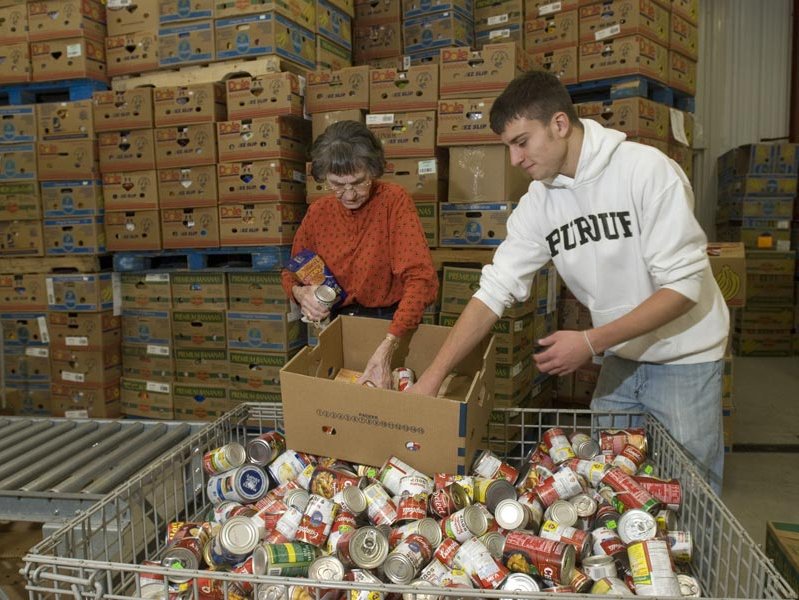The December holidays usually bring out the best in people, and their giving spirit soars until the tree dries out or all eight candles are extinguished. Unfortunately, however, after the New Year rolls around, most folks get wrapped up in their lives again and forget to reach out to those in need.
Gina Styer is the communications manager for Second Harvest Food Bank of Wisconsin, 1700 W. Fond Du Lac Ave., and she confirms that food banks and pantries receive increased donations in November and December, but fewer food items the rest of the year.
"Although donations trail off after the first of the year, the need doesn’t go away," says Styer. "And with the state of economy, there’s heightened need."
According to Styer, food requests increased in 2008 by 23 percent, yet donations are currently at a 10-year low. Consequently, Second Harvest is exploring other ways to obtain food rather than the typical model that encourages people to bring cans to events or donate at grocery stores.
Second Harvest now asks for monetary donations along with food donations, and this way, the giver doesn’t have to take the time to shop. Instead, the contributor provides the funds and Second Harvest buys the food from a retailer.
"Financial contributions are one way we can supplement donated items," says Styer.
In November 2007, Second Harvest launched an online food drive -- called the "Online Harvest" -- in another attempt to make giving more convenient. People can log onto the site and virtually shop for the exact items they want to donate, and then pay for the groceries with a credit card. Plus, by shopping online, people can donate perishable items like fruits and vegetables that are not usually accepted at food drives.
"Some people really want to donate fresh food, and this makes it possible," says Styer. "And people can contribute from the comfort of their home."
Generally, however, Second Harvest prefers to receive non-perishable items like peanut butter, pasta, cereal, canned fruits and vegetables, and all-in-one meals like canned soups and stews.
"Food that can last a while and be eaten any time of day is ideal, but every donation makes a difference," says Styer.
Offices are invited to group shop in the online food program, or to set up a food drive competition with other businesses or within the office.
"It’s a competitive, fun way to encourage giving and help people at the same time," says Styer.
Every year, Second Harvest provides enough groceries to food programs to feed 173,000 people in southeastern Wisconsin and 235,000 people in the eastern half of the state.
"The recent unemployment numbers don’t suggest it’s going to get better anytime soon," says Styer. "There will continue to be great need at local pantries."
Styer says, recently, she has met people standing in food lines who never dreamed they would be there.
"Hunger spans all ages, all races, all income levels. It doesn’t discriminate," says Styer. "People never know when their job might be on the chopping block, and when they might need to ask for help."
Molly Snyder started writing and publishing her work at the age 10, when her community newspaper printed her poem, "The Unicorn.” Since then, she's expanded beyond the subject of mythical creatures and written in many different mediums but, nearest and dearest to her heart, thousands of articles for OnMilwaukee.
Molly is a regular contributor to FOX6 News and numerous radio stations as well as the co-host of "Dandelions: A Podcast For Women.” She's received five Milwaukee Press Club Awards, served as the Pfister Narrator and is the Wisconsin State Fair’s Celebrity Cream Puff Eating Champion of 2019.



